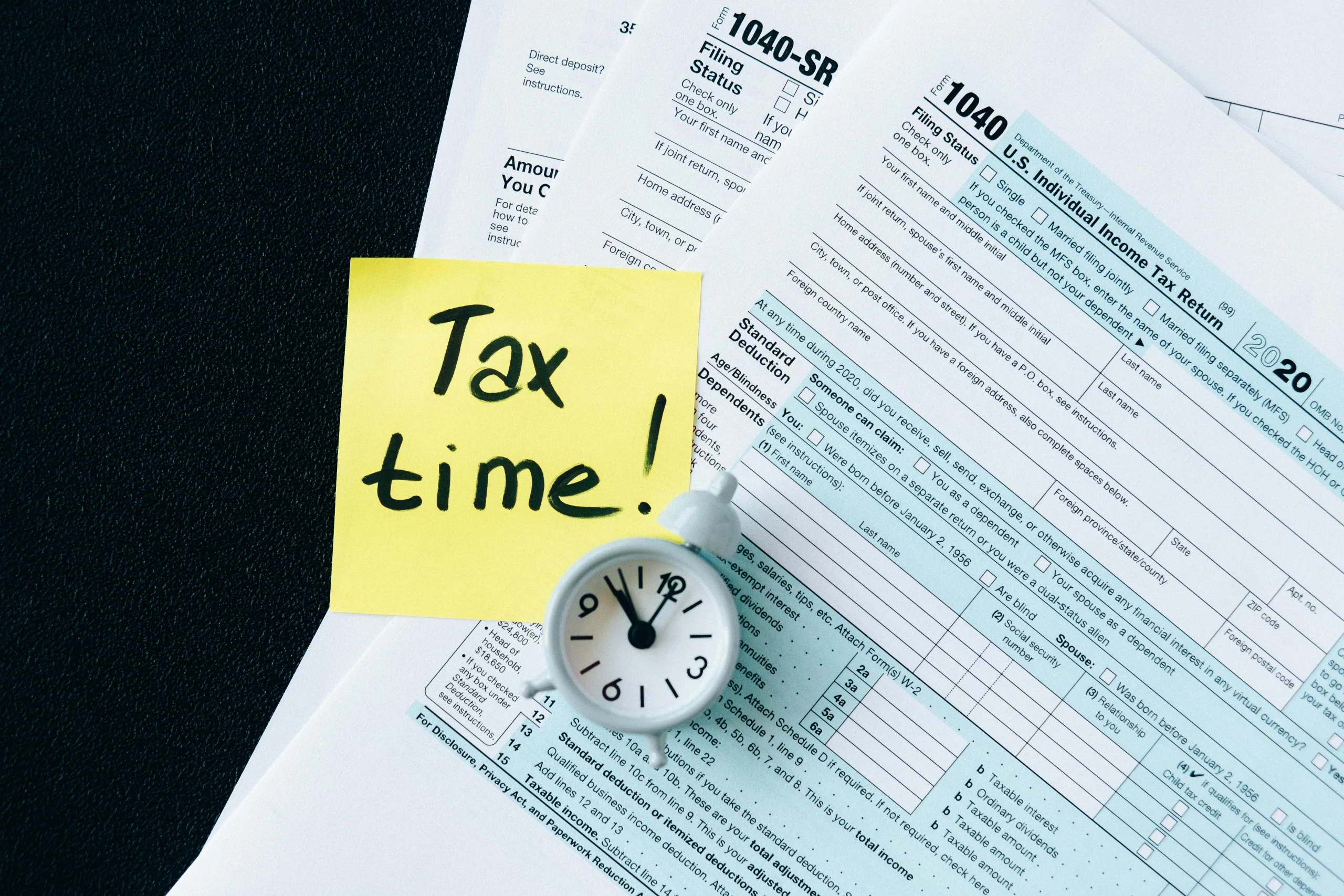Get Ahead of Tax Time: Essential Financial Preparation Strategies
Tax season can feel overwhelming, but with a proactive approach you can turn it into a manageable part of your financial routine. By putting key systems in place now, you’ll save time, reduce stress, and maximize every deduction and credit you deserve.
This article shows how to prepare for tax season with effective tax preparation tips and tax prep tips. You’ll find tax season tips on creating a filing system, tracking deductions, and more.
It also covers preparing for tax season through year end tax planning and end of year tax planning, and provides a year end tax strategy along with year end tax strategies to meet your needs.
In this guide, you will learn how to:
- Build a year-round filing system for tax documents
- Create and maintain a dynamic tax preparation checklist
- Schedule quarterly tax health check-ins
- Track deductions and credits with digital tools
- Set up a dedicated tax savings account
- File early and protect your identity
- Leverage innovative tax prep apps and techniques
Each section offers clear steps and practical tips to streamline your workflow and keep you audit ready. Ready to simplify your tax process and stay on top of your finances all year long? Let’s start by building a year-round filing system for your tax documents.
Build a Year-Round Filing System for Tax Documents
A consistent filing system ensures you spend less time scrambling at tax season. Organize documents as soon as they arrive and avoid year-end headaches.
Physical vs Digital Systems
Set up labeled folders or binders for categories like income, deductions, credits, and expenses. Keep these in a dedicated drawer or cabinet.
Digital folder structure
- Create main folders (Income, Deductions, Credits, Expenses)
- Use subfolders sorted by year and form type (e.g., 2023 > 1099-MISC)
Cloud Storage & Security
Scan paper records and back them up to a secure cloud service. Look for encryption at rest and in transit, SOC 2 compliance, and multi-factor authentication.
Tips for safe archiving
- Name files with date and description (e.g., “2023-02_W2_EmployerName.pdf”)
- Use the IRS Online Account to download tax transcripts and store official PDFs
Automated Transaction Categorization
Link bank, credit, and investment accounts to a financial management app. Rules and machine learning algorithms will tag income and expenses in real time.
- Review and adjust categories monthly
- Export transaction logs for easy import into tax software
A year-round system uncovers missed deductions, reduces errors, and speeds up your final tax prep.
Create and Maintain a Dynamic Tax Preparation Checklist
Set up a living checklist that tracks W-2s, 1099s, deduction receipts, credit documentation, and dependent information as you receive them. Review your list monthly to spot missing items early. This cuts year-end stress and ensures nothing slips through the cracks.
Core Tax Forms
- W-2 statements (employer wages)
- 1099 series (NEC, MISC, INT, DIV)
- Year-end pay stubs to reconcile totals
Use a consistent naming scheme like “YYYY_Type_Payer.pdf” for quick retrieval.
Dependent & Credit Documentation
Maintain records for credits and exemptions:
- Dependent Social Security numbers and birth dates
- Childcare receipts with provider tax ID
- Education forms (1098-T) and student loan interest (1098-E)
- Charitable gift acknowledgments and medical receipts
Automated Updates
Link your professional tax software or a spreadsheet to:
- Bank and investment accounts for real-time form imports
- Calendar reminders for missing items after January 31
- Cloud storage rules that flag unreceived forms
This dynamic system highlights gaps so you can follow up before filing deadlines.
Schedule Quarterly Tax Health Check-Ins
Quarterly reviews help you spot gaps early and prevent surprises at filing time. Spacing reminders every three months lets you reconcile income, update withholding or estimates, and track major changes.
Setting Calendar Reminders
- Block time in January, April, July, and October
- Add a December wrap-up to gather year-end documents
- Use your calendar’s repeat feature with alerts
Adjusting Withholdings and Estimates
Review actual earnings against your projections. For wages, run the IRS Tax Withholding Estimator and submit an updated Form W-4. If you have self-employment or investment income, calculate your liability and make quarterly estimated payments via IRS.gov/payments. Log each payment in a spreadsheet or app to stay on track.
Monitoring Life Events
Note events like marriage, a new child, or a job change. Each can affect your filing status, credits, or deduction limits. Update your withholding or estimates after an event and record the date and impact.
Consistent check-ins reduce stress, limit penalties, and keep your tax strategy aligned with your finances.
Advance Tracking for Maximizing Deductions and Credits
Effective tracking throughout the year helps you uncover every tax break. Implement these steps to stay organized and audit ready.
Categorizing Eligible Expenses
Keep expense categories clear and consistent. Create folders or tags for:
- Charitable contributions
- Medical and dental costs
- Home office expenses
- Education fees and supplies
- Mortgage interest and property taxes
Link bank and credit accounts to your financial growth. Automated rules tag transactions in real time and alert you to uncategorized items.
Digital Receipt Management
Scan paper receipts as soon as you get them. Use a mobile scanner or receipt-capture app with OCR to extract dates, amounts, and vendors. Store files in encrypted cloud storage with a folder structure by year and category. Metadata tagging makes search simple and audit ready.
Specialized Deductions & Credits
Identify and document niche credits to boost savings.
Education Credits
Track qualified tuition payments and related fees for the American Opportunity Credit and Lifetime Learning Credit. Keep Form 1098-T and receipts in a dedicated education folder.
Home Office Deduction
Measure your workspace square footage. Record expenses for rent, utilities, and repairs. Save invoices and utility bills to support your proportional deduction.
Energy Improvement Credit
Save receipts for qualifying home improvements under the Inflation Reduction Act. Log installations like solar panels or energy-efficient windows to claim credits.
Set Up a Dedicated Tax Savings Account
A dedicated tax savings account separates your tax funds from operating expenses. This approach prevents last-minute scrambling and makes it easier to cover quarterly or annual tax payments.
Estimating Annual Liability
Use an IRS Form 1040-ES worksheet or an online tax calculator to project your federal and state liability. Review last year’s return, adjust for income changes, new deductions or credits, and arrive at a realistic tax estimate for the year.
Automated Savings Transfers
Set up an automatic transfer in your online banking or fintech app. Schedule a monthly or per-pay-period transfer of 25 to 30 percent of gross income into your tax account. Automation keeps your savings consistent without manual effort.
Choosing the Right Account
Compare these options for your tax reserve:
- Credit union or high-yield savings accounts for competitive APYs and low fees
- Money market accounts offering check-writing privileges
- Short-term certificates of deposit for higher rates if funds can sit idle
Look at minimum balance requirements, withdrawal limits, and ease of access to find the best fit.
File Early and Safely to Reduce Rush and Risk
Filing your return by late February cuts delays and gives you more time to resolve issues. Electronic filing reduces common errors and speeds processing.
E-Filing vs Paper Filing
E-filing typically yields refunds in less than 21 days. The IRS flags fewer errors in digital returns and scans forms automatically. Paper returns can be delayed by postal service and manual entry.
Identity Theft Prevention
Protect your personal data before you file:
Use an Identity Protection PIN
An IP PIN is a six-digit code that bars someone else from using your Social Security number. Request one through your IRS Online Account or at a local Taxpayer Assistance Center.
Secure Your Account
Choose strong passwords, enable two-factor authentication, and watch for phishing emails claiming to be from the IRS.
Choosing Direct Deposit
Direct deposit is the safest way to receive refunds. You can send funds to:
- A bank account
- A prepaid debit card
- A mobile payment app
This avoids lost or stolen checks and gets money to you faster.
Leverage Innovative Tax Prep Tools and Techniques
Embrace digital solutions to cut prep time and improve accuracy. From interactive planners to AI-driven sorting, these tools help you stay organized year-round.
Tax Scenario Simulation Tools
Tax software often includes simulators. Input wages, deductions, or filing status to model refunds or liabilities. Test scenarios like a new home or adding a dependent to refine your plan before filing.
AI Document Sorting & OCR
OCR engines scan and extract data from W-2s, 1099s, and receipts. AI algorithms categorize documents and tag fields automatically. This streamlined workflow reduces manual entry and minimizes errors when importing data.
Gamified Savings Challenges
Apps designed for tax savings turn goals into engaging challenges. Set a percentage of income for taxes, track milestones, and earn badges. Visual progress bars and timely prompts keep you motivated throughout the year.
Mobile Checklist & Alerts
Mobile apps and IRS2Go send push notifications for key tasks. Receive real-time reminders for missing forms, upcoming due dates, and estimated payment deadlines. Manage your checklist on any device to ensure nothing is overlooked.
Conclusion
Preparing for tax season does not have to be a last-minute scramble. By adopting the strategies in this guide, you can turn tax season into a routine part of your financial workflow. Here are the key tips for tax season:
- Build and maintain a year-round filing system to keep documents organized
- Use a dynamic checklist and automated alerts to track forms and receipts
- Schedule quarterly check-ins to adjust withholdings, estimate payments, and record life changes
- Track deductions and credits with digital tools and OCR-powered receipt apps
- Set up a dedicated tax savings account with automated transfers
- File early and securely using e-filing, direct deposit, and an IP PIN for extra protection
- Leverage advanced tax prep apps for scenario simulations, AI sorting, and gamified savings challenges
Implementing these steps will save you time, reduce stress, and help you claim every deduction you deserve. Start now, and you will move into next year with a clear system, confident planning, and the peace of mind that comes from staying ahead of your taxes. Your future self will thank you.



